New projects in sight for one of Switzerland’s most important museums: with the reopening of cultural institutes across the country, which was scheduled for today, Monday, March 1, the transformation of the Musée d’Art et d’Histoire in Geneva also kicks off. The museum, which has been open since 1910, is one of the largest in the country, with an exhibition area of 7,000 square meters and a relevant collection of 650,000 objects ranging from archaeology to modern art: from ancient Egyptian artifacts to Greek and Roman collections, from Swiss and German Renaissance works with works by Konrad Witz and other great painters of the 15th and 16th centuries, to masterpieces by the Impressionists, and on to the 20th century with Picasso, Braque, and Giacometti. The new director, Marc-Olivier Wahler, who was appointed in 2019 (although, complicit in the pandemic, he has so far worked with the museum virtually always closed), announced the plan that will radically rethink the way it presents itself to the public and will also aim to expand the museum’s outreach for greater integration of the institution within the life of the city and the country.
The prologue will be an exhibition curated by Viennese artist and designer Jakob Lena Knebl (who will represent Austria at the upcoming Venice Biennale), who has been tasked with mounting an exhibition that includes a selection of works from the Musée d’Art et d’Histoire’s collection, in dialogue with some loans. The exhibition, titled Marcher sur l’eau (“Walking on the Water”) will be dedicated to the cultural life of Geneva (the name of the exhibition refers to Lake Geneva, but not only) and, above all, will present visitors with totally new ways (which will surely appear bizarre and extravagant to many) to read the objects on display: the chronological span goes from the Renaissance (which will be represented by an altarpiece by the aforementioned Konrad Witz) to 1971, the year of the Montreaux Casino fire, eternalized by Deep Purple’s celebrated song, Smoke on the water. The exhibition aspires to be a participatory event capable of breaking down the barriers between high and low culture, art and design, canonical and popular. The exhibition opens March 2 “transforming,” a note says, "the rooms of the permanent collection into a theater of historical possibilities, making some of its most iconic pieces the protagonists of a fantastical and subversive mise-en-scène."
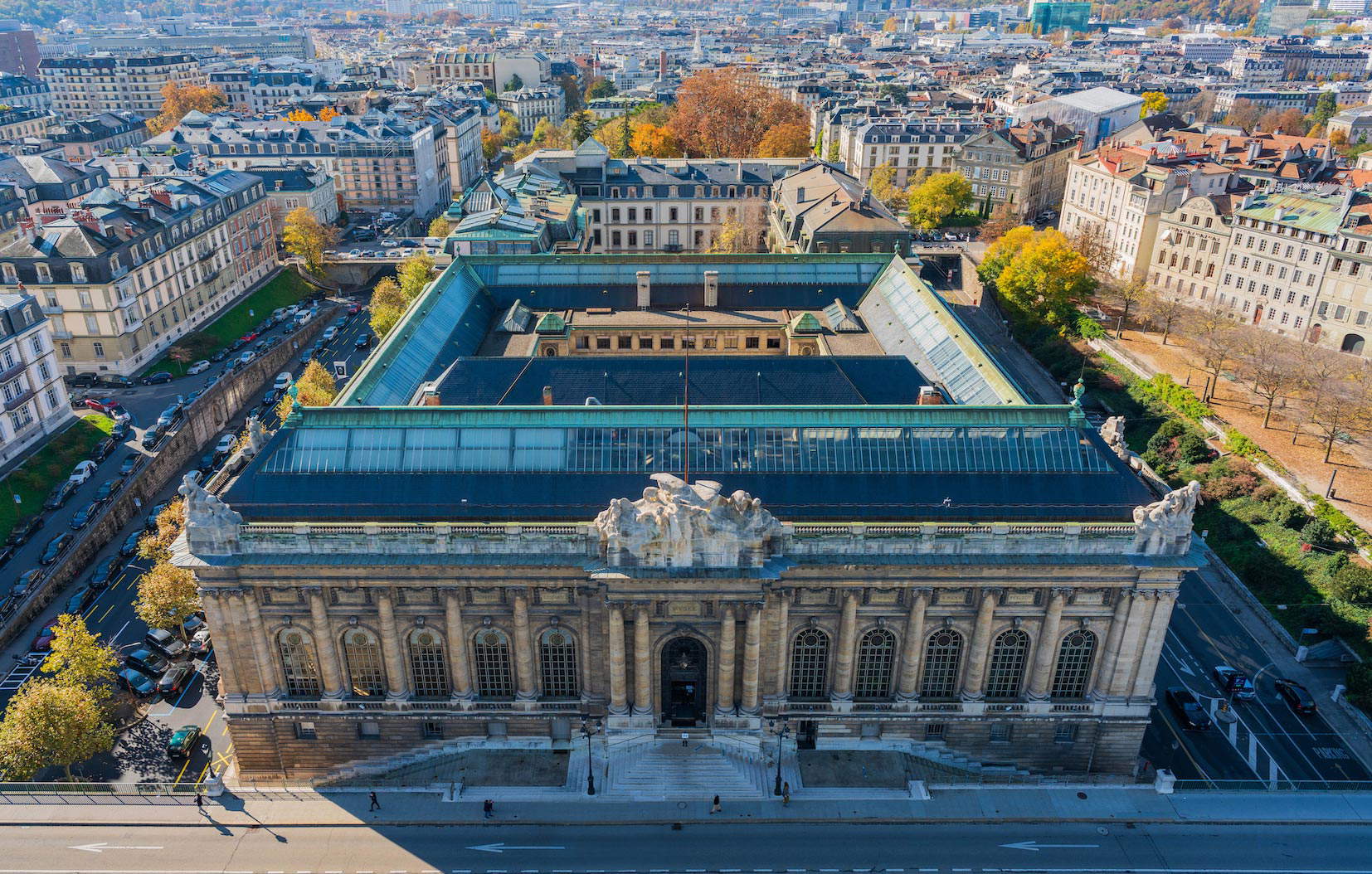 |
| The Musée d’Art et d’Histoire, Geneva. Ph. Photodrone.pro |
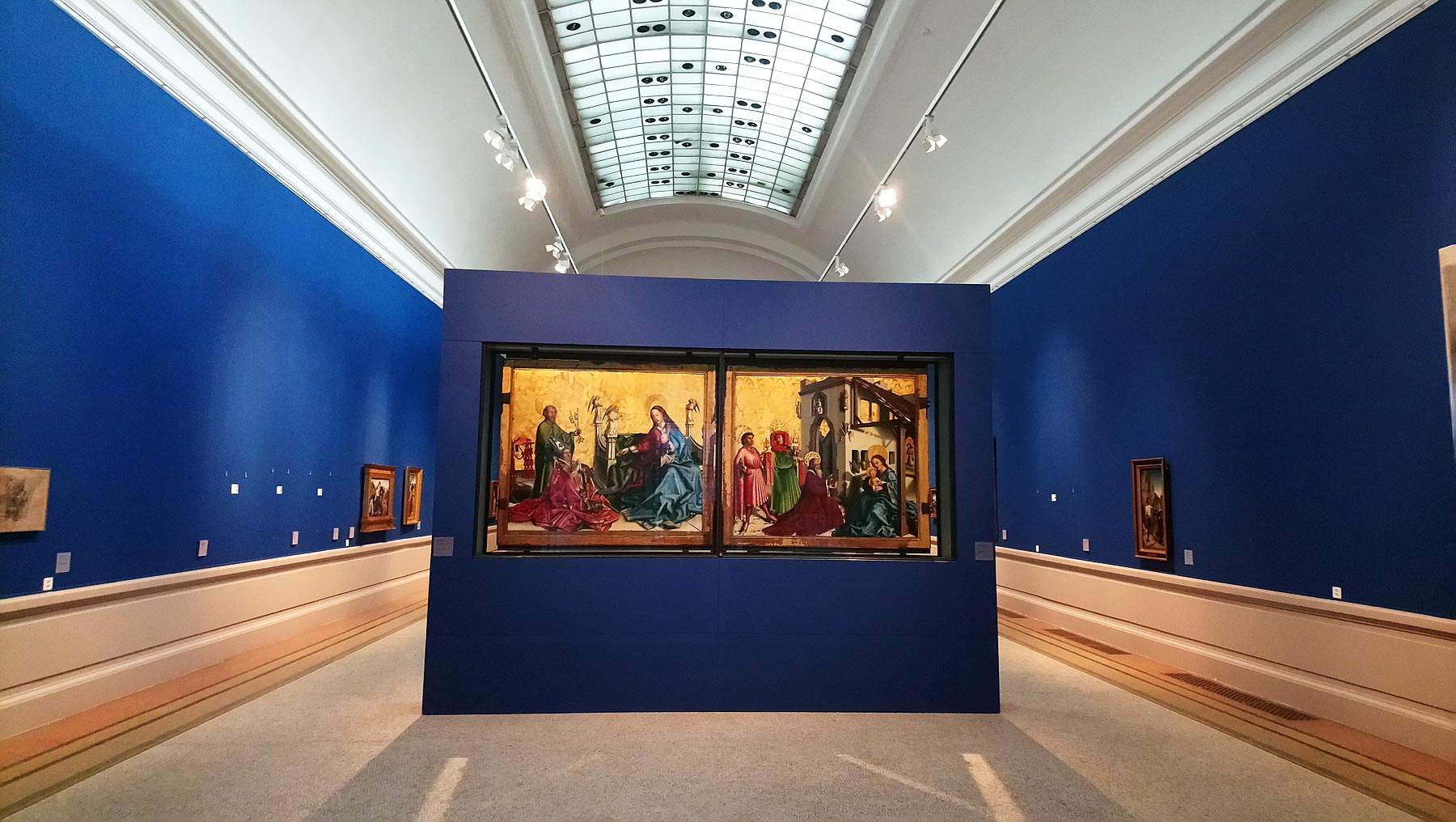 |
| A room in the museum. Ph. Credit Finestre Sull’Arte. |
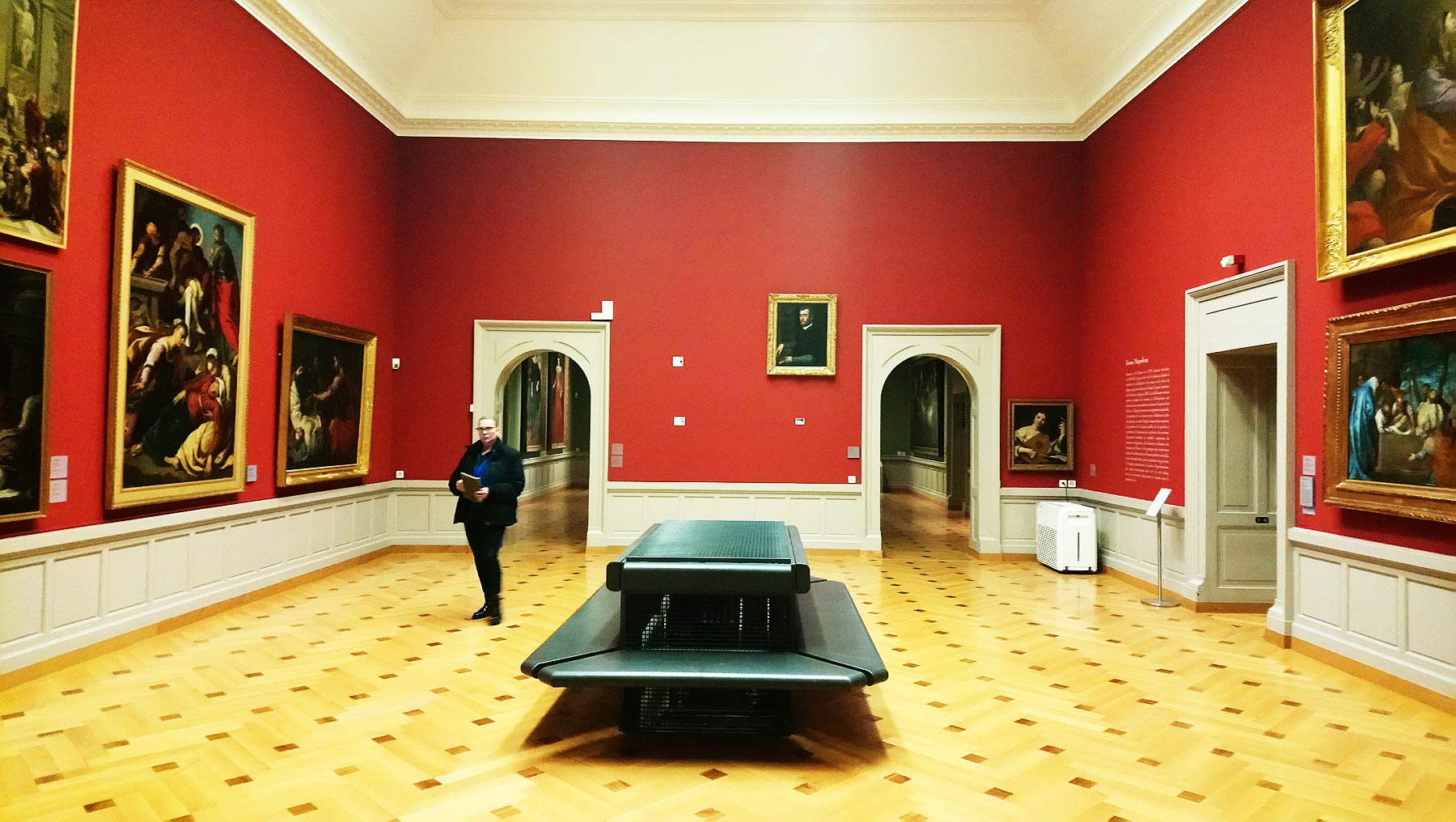 |
| A room of the museum. Ph. Credit Finestre Sull’Arte |
 |
| A room of the museum. Ph. Credit Finestre Sull’Arte |
Marcher sur l’eau will see, for example, a colossal statue of Ramses II (from 1290 B.C.) rearranged in a Hollywood-style bedroom, and then again some neoclassical sculptures of the goddess Venus of which one is put inside a shower and another to which a collection of women’s footwear from the 19th century onward will serve as a backdrop, and much more. The public will then be able to purchase a limited-edition dress that Knebl (who studied fashion at the University of Applied Arts in Vienna) specially designed for the exhibition, which will be available in the museum store. For this exhibition, Knebl said she was inspired by the short story There are more things by Jorge Luis Borges, whose title is borrowed from Shakespeare’s Hamlet, and in which an unlikely encounter with strange objects and creatures is described.
“Art, design and everyday objects have equal standing in the spaces I create,” the Austrian artist emphasizes. "My goal is to build hybrid spaces that seduce and allow new ways of reading familiar works, to create a presentation that transgresses museum norms. Marcher sur l’eau is also a reference to the moment when we try something for the first time: will it work or not? Will we be able to walk on water?"
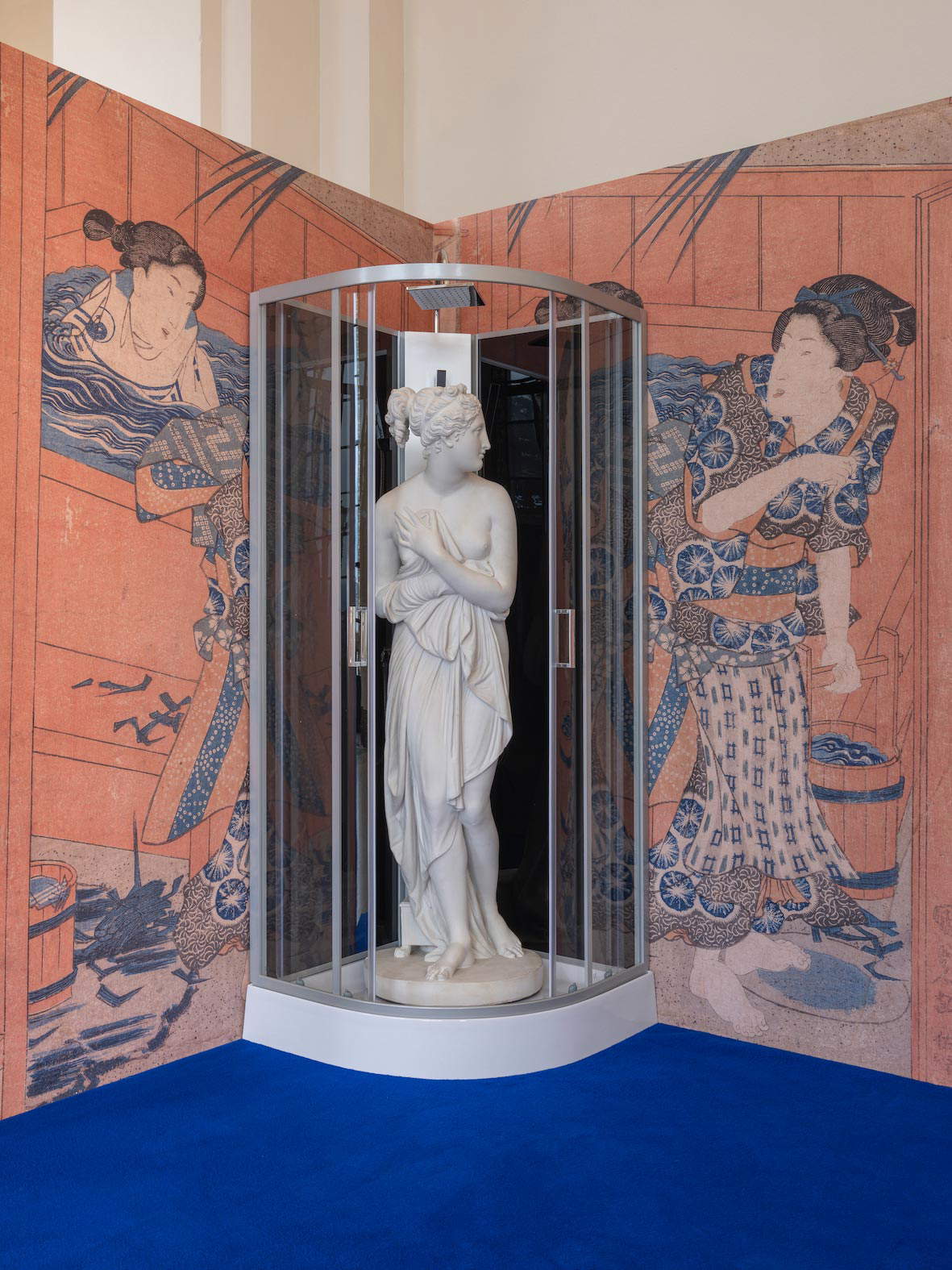 |
| Marcher sur l’eau exhibition layouts. Ph. Credit Julien Gremaud |
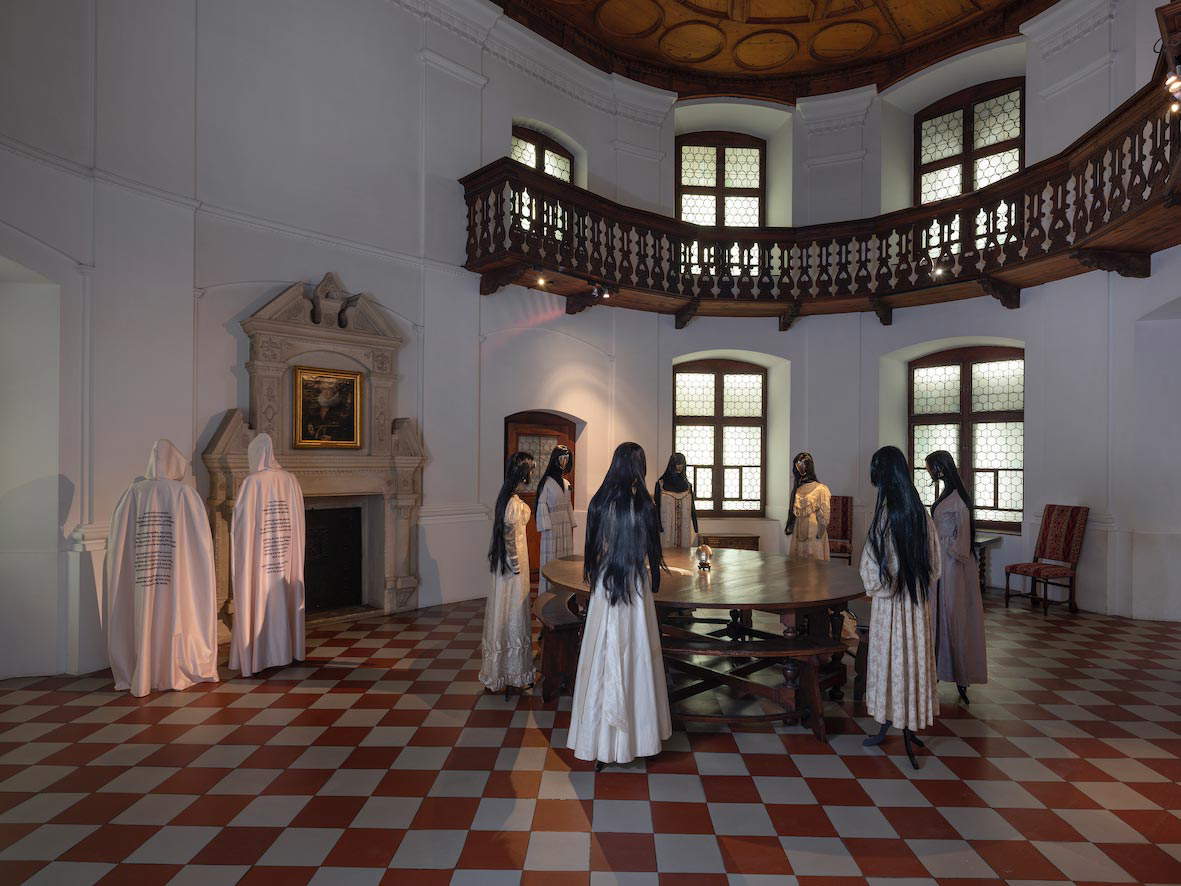 |
| Installations of the Marcher sur l’eau exhibition. Ph. Credit Julien Gremaud |
The management of the Geneva institution has already made it known that Marcher sur l’eau is an example of the modus operandi that the Musée d’Art et d’Histoire will follow under Wahler’s direction. Wahler arrives in Geneva after a number of experiences primarily in the field ofcontemporary art: a curator, art historian, and critic born in 1964 in Neuchâtel, Wahler began his career at the Musée Cantonal des Beaux-Arts in Lausanne in 1992, joining MAMCO (Musée d’Art Moderne et Contemporain) in Geneva the following year before becoming co-founder and director of CAN - Centre d’art Neuchâtel in 1995; after which he was director of the Swiss Institute in New York from 2000 to 2006, director and chief curator of the Palais de Tokyo in Paris from 2006 to 2012, and finally director of the Michigan State University Broad Museum from 2016 to 2019. “We are not simply an art museum, nor a history museum,” Wahler says. “As our name well explains, we are a fusion of both: a museum of collective heritage and memory, where people can encounter objects and stories that help them understand the world around us. Our goal is to bring out the best of our collections to tell engaging and surprising stories.”
To describe the exhibition programs that will be held at the Musée d’Art et d’Histoire, Wahler adopts the phrase “laboratory of ideas”: the goal of the exhibitions will be to rethink the way the public relates to the museum, as well as to rethink the way the objects themselves that the institute preserves and the stories they tell are presented. Every six months, the institute will host approximately ten new exhibitions of different sizes (which will fall into the categories of “XL,” “L,” “M,” “S,” and “XS,” like dress sizes): the larger exhibitions (“XL” and “L”) will feature an outside curator who will bring his or her vision to the museum (in the first semester) and an in-depth look at a specific aspect of the collection (in the second semester). There will be two such exhibitions each year. The “M” exhibitions, on the other hand, will be four and will be looks at elements of the permanent collection, while the twelve “S” type events will bring to the public’s attention two objects chosen by the director. Finally, there will be weekly events (“XS”) held every Thursday: they will range from openings to lectures via performances.
 |
| Marc-Olivier Wahler |
 |
| The museum’s new logo |
To highlight the new course, the Musée d’Art et d’Histoire has launched a new website and a new visual identity that, in the museum’s intentions, reflects its ambition to bring history into the context of the contemporary. The graphics were designed by Zurich-based Hubertus Design: the museum’s new logo takes the form of a simple, unbroken line that traces the contours of the museum’s acronym, “MAH.” The line is meant to recall a cuneiform inscription, a constellation of the zodiac, a process of transformation in time and space. “It is both language and symbol,” explains Jonas Voegeli, director of Hubertus Design. “And as such, it falls under two different categories: a word and a sign, with their respective iconographic qualities.” In addition to the logo, the studio also designed a special font, “MAH-Sans,” with which the museum’s panels and information materials will be written.
Finally, the museum has decided to expand outside the city. In fact, the Musée d’Art et d’Histoire has begun planning for a museum campus with space for exhibitions, lectures, and more, to give the museum and the city new spaces. An international competition will be launched later this year to select the architectural firm to design the expansion plan. “Our goal,” Wahler concludes, “is to deliver a museum that is internationally recognized and in line with the highest standards of our profession. A museum that is distinctly rooted in the city of Geneva, and that sees itself as an anchor for the city and a resource for its citizens.”
 |
| How to bring art and history into the everyday: Geneva's Musée d'Art et d'Histoire gets a makeover |
Warning: the translation into English of the original Italian article was created using automatic tools. We undertake to review all articles, but we do not guarantee the total absence of inaccuracies in the translation due to the program. You can find the original by clicking on the ITA button. If you find any mistake,please contact us.